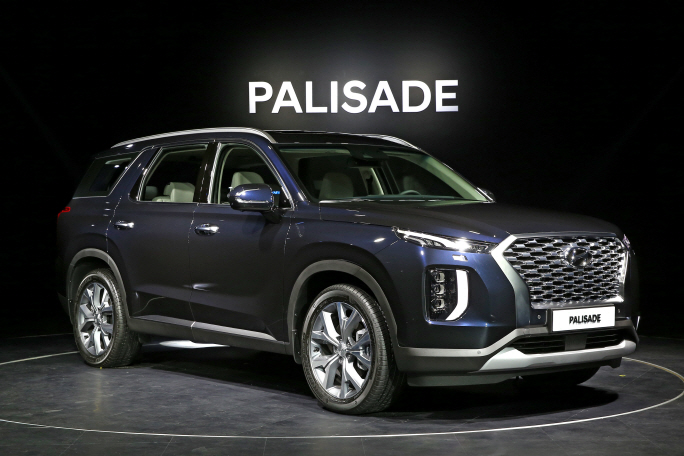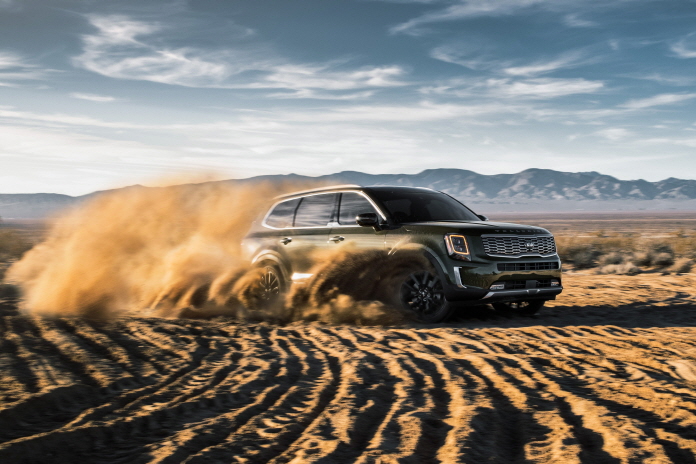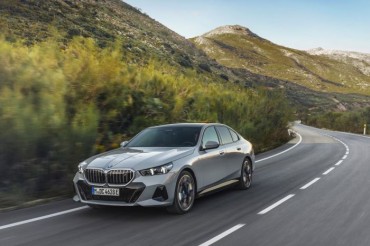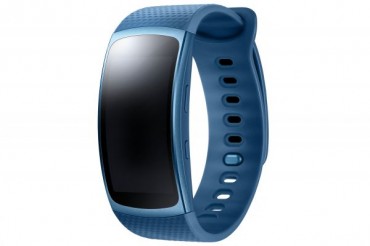SEOUL, May 6 (Korea Bizwire) — Hyundai Motor Co. and affiliate Kia Motors Corp. are on track to log improved earnings this year due to a low base effect and robust sales of sport-utility vehicles, experts and industry sources said Monday.
In the January-March quarter, Hyundai enjoyed a 30-percent on-year jump in net profit at 954 billion won (US$815 million) and Kia’s net profit soared 50 percent to 650 billion won.
Their combined vehicle sales fell 1.5 percent to some 1.67 million in the first quarter from a year earlier, which is equal to roughly 22 percent of their overall annual sales target of 7.6 million vehicles this year.
“Hyundai and Kia were late to recognize consumers’ growing appetite for SUVs but their new SUV models are receiving a strong response from customers. It will help improve their profitability this year,” Kwon Yong-joo, professor in the automotive and transportation design department at Kookmin University, said over the phone.
Strong sales of Kia’s Telluride SUV in the United States and of Hyundai’s Palisade SUV in the domestic market helped buoy their first-quarter earnings, and such a trend will continue to support their sales for the rest of the year, according to Kim Tae-nyen, vice president of the Korea Automobile Manufacturers Association.
“Hyundai and Kia have beefed up their SUV lineups and it appears that such efforts are beginning to pay off this year. Several new SUV models will be released this year,” Kim said.
Hyundai currently sells the Tucson and Santa Fe SUVs and Kia sells the Sorento and Sportage SUVs in the U.S. markets.
Hyundai plans to add the luxury Genesis GV80 SUV and the entry-level Venue SUV in the local market later this year. Kia also plans to launch the entry-level SUV with the project name of SP2 and the upgraded Mohave SUV.
Kia is also considering bringing the Telluride, produced in Kia’s U.S. plant for sales in the North American markets only, to the local market later depending on market demand here.
Still, competitive SUVs won’t be a cure-all for the challenges facing Hyundai and Kia this year. Lackluster sales in China remain the biggest concern for the Korean automakers, analysts said.
“Carmakers, domestic and international, in China are undergoing a slowdown as local customers increasingly prefer ride-sharing services offered by Uber instead of buying a new car,” Oh Dong-ryun, an analyst at Samsung Securities Co., said.
In China, Korean carmakers also face tougher competition with local rivals that offer good models at lower prices.
Hit by political tensions between Seoul and Beijing over the deployment of an advanced U.S. missile defense system, called THAAD, in South Korea in 2017, Hyundai and Kia’s total sales in China plunged 36 percent to 1,145,012 autos in 2017 from a year ago.
The carmakers’ slump continued last year with growth in their sales nearly stalled at 1,160,179 in the neighboring country.
As a result, Hyundai plans to stop production of the No. 1 Beijing plant with a capacity of 300,000 units as its utilization rate recently fell below 50 percent. It has three plants in Beijing, one in Changzhou and another in Chongqing. Their combined capacity reaches 1.65 million vehicles.
Kia also plans to stop production of one of its three Chinese plants, in Yancheng, in a readjustment plan.
Analysts do not see any significant rebound in sales there.
“To jumpstart sales in China, Hyundai and Kia need to aggressively forge business ties with ride-hailing services companies and provide their vehicles to them over the long term,” Oh said.
(Yonhap)








